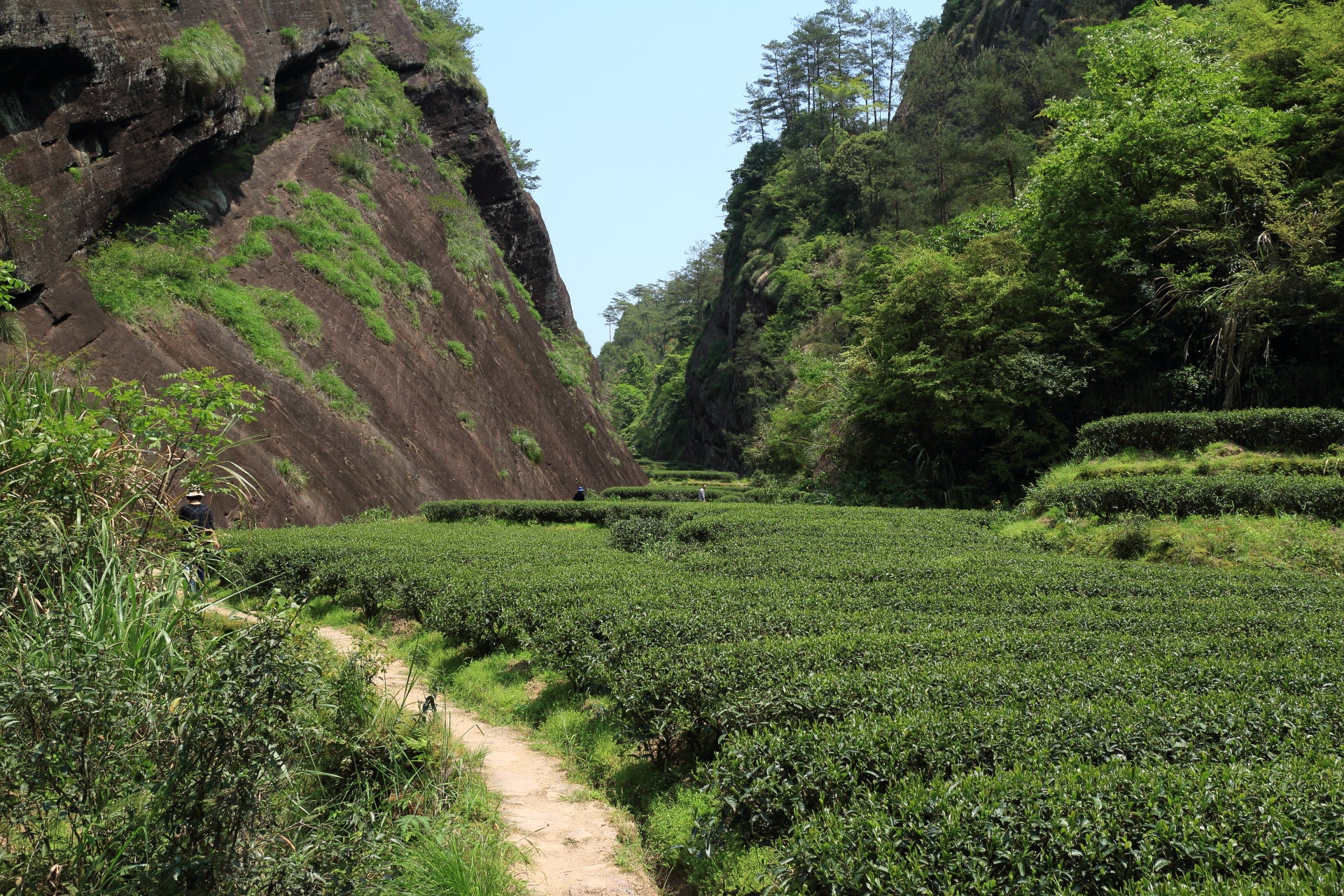Qi Lan
Überraschend rezent, begrüßen die getrockneten Blätter dieses Qi Lan die Nase zunächst mit einem recht milden Duft... einem Hauch von gegrillten Pfirsichen. Es scheint, dass die sorgfältige Oxidation und die dreifache Röstung perfekt kalibriert wurden, so dass der Likör ein schönes Gleichgewicht von Frucht und Blumigkeit in einer zähflüssigen Textur zum Ausdruck bringt. Nach mehreren Aufgüssen weicht der Pfirsich dem Apfel und einer Anethol-Süße am Rande der Zunge. Der Yancha wird im Herzen von Wuyishan im „Zheng Yan"-Gebiet von Lianhua Feng (Lotusgipfel) angebaut und sein wertvolles Terroir wurde durch eine meisterhafte Verarbeitung zu einem Yancha der reinen Freude veredelt.
Wuyi Yancha – der Felsentee
Wuyi Yancha, auch bekannt als Wuyi-Felsentee oder, besser gesagt, Klippentee, ist ein traditioneller Oolong-Tee (eine der sechs Teekategorien, auf halbem Weg zwischen grünem und schwarzem Tee). Der in der nördlichen Provinz Fujian hergestellte Yancha ist ein komplexer Tee, dessen typischer mineralischer Geschmack sich das Feld mit der Stärke der Röstung und zarten blumigen und fruchtigen Noten teilt.
- HERKUNFT: Lianhua Feng, Wuyishan, Nanping, Fujian, China
- WAS DER NAME BEDEUTET: Seltene Orchidee (qí lán)
- ZÜCHTUNG: Qi Lan
- GEERNTET AM: 25. April 2020
- GESCHMACK: Apfel, gekochter Pfirsich, Anis
- RÖSTUNG: Dreifach (zuletzt am 1. Dezember 2020)
- Menge: 6g / 500ml
- Wassertemperatur: 90°C
- Ziehzeit: 5 Min.
- Menge: 3g / 100ml
- Wassertemperatur: 90°C
- 4 Aufgüsse: 45, 45, 60, 90 Sek.
Die besten Ergebnisse beim Gongfu Cha erzielen Sie, wenn Sie den Tee im traditionellen Gaiwan oder in einer Yixing-Teekanne zubereiten. Eine zu hohe Wassertemperatur würde die Blätter verbrennen und zu einem bitteren Geschmack führen.
Zusätzliche Informationen
Authentic Wuyi Yan Cha is produced in the Mount Wuyi region, a UNESCO natural heritage site. The dramatic gorges of the Nine Bend River are surrounded by a largely intact subtropical forest and smooth cliffs of black-brownish rocks. The tea plants grow in narrow valleys next to the cliffs in a mineral-rich soil.
Today Wuyi Yan Cha is one of the most valued teas in China. Because it has become a status symbol, many wealthy Chinese are willing to pay a fortune for it without even knowing how a proper Wuyi Yan Cha should taste. The result has been prices inflating to unjustified levels and quality often sacrificed for quantity.
Unique to the Wuyi Yan Cha is a mineral savor coming from the soil and the surrounding cliffs. Being the oolong with the highest fire finish, fresh Yan Cha may as a result be strong and pungent. Sharpness and too-prominent astringency subside upon ageing. Premium high-fire Yan Cha tastes better after a few years of storage. Use a Yixing teapot to soften the tea, should it be too astringent for your palate.
The overall taste profile is rich, complex, and deep. Depending on cultivar and environment, the mineral-roasted flavor is refined by floral, fruity, nutty, or woody accents.










